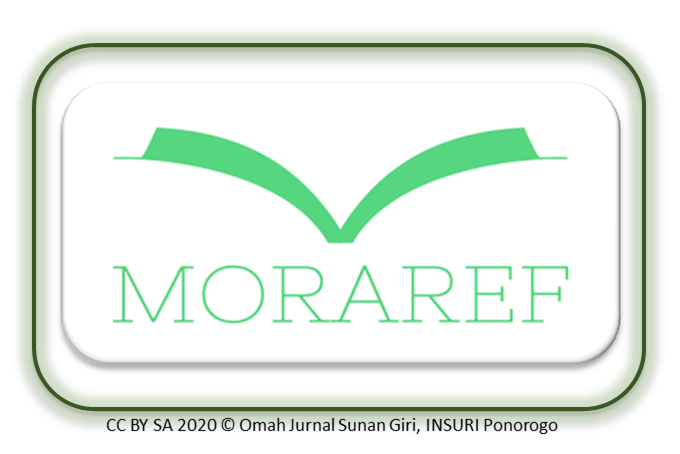The Sacralization of the Myth of Prohibition of Leaving the House at Dusk in Sandekala Film: Charles Sanders Pierce’s Semiotic Analysis
Keywords:
Sacralization of Myth, Semiotic Analysis,, Sandekala FilmAbstract
Abstract
Sandekala is a horror film that tells the story of local and religious myths about the prohibition of going out at sunset because the devil hovers around at this time. The combination of myth and religion in this horror film is also an attempt to sacralize myth and religion which is produced in the plot of a scary film scene. This paper aims to determine the position of myth and religious themes in the horror film genre in Indonesia, and discuss how the depiction of the sacred myth comes out at sunset. Sandekala's film was analyzed using Charles Sanders Peirce's semiotic analysis, namely sign, text and interpretant. The results of this paper are first, myth and religion have been used by Indonesian horror film filmmakers since the New Order Era until now. Second, the depiction of the sacredness of the myth of the prohibition of going out at sunset in this film with a dark evening scene, the mother and child as the main characters who have left the house at dusk ignoring the prohibition that has become a myth of society. In addition to confirming the myth of society, this film is also an attempt to remind the segmentation of young people and urbanites who have begun to forget this myth.
Abstrak
Film Sandekala merupakan film bergenre horor yang bercerita tentang mitos lokal dan religi tentang larangan keluar pada waktu magrib karena setan bergentayangan pada waktu ini. Gabungan antara mitos dan religi dalam film horor ini juga merupakan upaya sakralisasi antara mitos dan religi yang diproduksi dalam alur scene film yang menakutkan. Tulisan ini bertujuan untuk mengetahui posisi tema mitos dan religi dalam genre film horor di Indonesia, dan membahas tentang bagaimana penggambaran sakralisasi mitos keluar pada waktu magrib. Fim Sandekala dianalisis menggunakan analisis semiotik Charles Sanders Peirce yaitu sign, teks dan interpretant. Hasil dari tulisan ini adalah pertama, tema mitos dan religi sudah digunakan sineas film horor Indonesia sejak Era Orde Baru sampai sekarang ini. Kedua, penggambaran sakralisasi mitos larangan keluar magrib di film ini dengan scene suasana magrib yang gelap, ibu dan anak sebagai pemeran utama yang terlanjur keluar rumah waktu magrib ini mengabaikan larangan yang sudah menjadi mitos masyarakat. Film ini selain meneguhkan mitos masyarakat, juga sebagai upaya untuk membidik segmentasi anak muda dan kaum urban yang sudah mulai melupakan mitos ini.
References
Agustina, W. L. (2016). Mitos dan Sensualitas Dalam Perkembangan Film Horor Indonesia. Patrawidya: Seri Penerbitan Penelitian Sejarah Dan Budaya, 17, 193–208. http://patrawidya.kemdikbud.go.id/index.php/patrawidya/article/view/61/49
Ayun, P. Q. (2015). Sensualitas dan Tubuh Perempuan dalam Film-film Horor di Indonesia (Kajian Ekonomi Politik Media). JURNAL SIMBOLIKA: Research and Learning in Communication Study, 1(1). http://www.ojs.uma.ac.id/index.php/simbolika/article/view/46
cnbcindonesia.com. (2019). Ngeri, Ini Cuan Besar di Balik Industri Film Horor RI! https://www.cnbcindonesia.com/lifestyle/20191113161031-33-115033/ngeri-ini-cuan-besar-di-balik-industri-film-horor-ri
cnnindonesia.com. (2019). Rupiah, “Buah Manis” dari Seram Film Horor. https://www.cnnindonesia.com/hiburan/20191027180653-220-443285/rupiah-buah-manis-dari-seram-film-horor
Debby, Y., Hartiana, T. I. P., & Krisdinanto, N. (2020). Desakralisasi film horor Indonesia dalam kajian reception analysis. ProTVF, 4(1), 1. https://doi.org/10.24198/ptvf.v4i1.24171
Farizal Alam, Z. Q. (2018). Hadis dan Mitos Jawa. Riwayah : Jurnal Studi Hadis, 3(1), 109. https://doi.org/10.21043/riwayah.v3i1.3440
FilmFest, J. (2016). Penghargaan Film Sandekala. https://jaff-filmfest.org/open-air-cinema/sandekala/
Hakim, L. (2017). AGAMA & FILM (Pengantar Studi Film Religi). Government of Indonesia (GoI) and Islamic Development Bank (IDB).
Hasan, N. (2020). KONSTRUKSI STIGMA MISTIS KOTA BANYUWANGI DALAM CERITA KKN DI DESA PENARI. MUHARRIK: Jurnal Dakwah Dan Sosial, 3(02), 139–156. https://doi.org/10.37680/muharrik.v3i02.434
Herawati, E. (2011). Pornografi dalam Balutan Film Bertema Horor Mistik di Indonesia. Humaniora, 2(2), 1408. https://doi.org/10.21512/humaniora.v2i2.3209
Ida, R. (2014). Metode Penelitian : Studi Media dan Kajian Budaya. Jakarta : Prenadamedia Group.
Iswidayati, S. (2007). Fungsi Mitos Dalam Kehidupan Sosial Budaya Masyarakat. Harmonia : Jurnal Pengetahuan Dan Pemikiran Seni, VIII(2), 180–184. https://media.neliti.com/media/publications/64751-ID-none.pdf
Kriyantono, R. (2014). Teknis Praktis Riset Komunikasi (7th ed.). Jakarta : Kencana Prenadamedia.
Kurniawan, S. (2019). PANTANG LARANG BERMAIN WAKTU MAGRIB: Kajian Living Hadis Tradisi Masyarakat Melayu Sambas. Jurnal Living Hadis, IV(1), 1–26. https://doi.org/10.14421/livinghadis.2019.1629
Marwantika, A. I. (2019). Potret dan Segmentasi Mad’u Dalam Perkembangan Media di Indonesia. Al-Adabiya: Jurnal Kebudayaan Dan Keagamaan, 14(01), 1–14. https://doi.org/10.37680/adabiya.v14i01.100
Nur, A. (2016). Perayaan Mitos Dalam Film Horor Indonesia : Analisa Struktural dan Implikasi Sosial. Al-Ibrah, 1(1), 140–169.
Nurdinah, M. (2013). Memahami Konsep Sakral dan Profan Dalam Agama-Agama. In Substantia: Jurnal Ilmu-Ilmu Ushuluddin (Vol. 15, Issue 2).
Sobur, A. (2008). Semiotika Komunikasi. BAndung : Remaja Rosdakarya.
Tiwahyupriadi, D., & Ayuningtyas, Y. (2020). Indonesian Horror Film : Deconstruction of Repetitive Elements of Indonesian Urban Legend for Cultural Revitalization , Creativity, and Critical Thinking. 2020, 115–125. https://doi.org/10.18502/kss.v4i12.7589
Wahyuningsih, S. (2019). Film & Dakwah : Memahami Representasi Pesan-Pesan Dakwah Dalam Film Melalui Analisis Semiotika. Surabaya : Media Sahabat Cendekia.
Watkins, G. J. (2008). Teaching Religion and Film. Oxford University Press.
Yoesoef, M. (2015). Film Horor Sebuah Definisi yang Berubah. Wacana, Journal of the Humanities of Indonesia, 5(2), 1. https://doi.org/10.17510/wjhi.v5i2.322
Yustriani, L., & Rahman, L. (2019). Analisis Data Kajian Pemandangan Umum Industri Film 2019. BEKRAF (Badan Ekonomi Kreatif). https://www.bekraf.go.id/pustaka/page/pemandangan-umum-industri-film-indonesia-2019
Downloads
Published
Issue
Section
License
The author(s) retain/s the copyright and grant/s Muharrik: Jurnal Dakwah dan Sosial the first publication rights licensed under the Creative Commons Attribution-NonCommercial 4.0 International (CC BY-NC 4.0) , which allows others to access (search, read, download and quote), share (copy and redistribute the material in any media or format) and adapt (mix, modify and develop) works for legitimate non-commercial purposes, with recognition of the authorship of the work and its initial publication in this journal.













